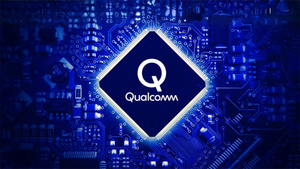
As the financial markets brace for the mid-decade, leading institutions Goldman Sachs and J.P. Morgan have unveiled their intricate blueprints for the stock market's trajectory in 2025 and 2026. Their detailed outlooks, while sharing some common ground, also present significant divergences, creating a complex landscape for investors seeking clarity amidst persistent economic and geopolitical uncertainties. The immediate implication for the market is a heightened need for judicious analysis and strategic diversification, as the path forward is anything but uniform, suggesting that different segments of the market will experience vastly different fortunes.
This clash of titans underscores the intricate balancing act investors face: weighing the undeniable tailwinds of technological innovation and resilient economic activity against the formidable headwinds of policy uncertainty, geopolitical instability, and stretched valuations. The varying S&P 500 targets and the nuances in identified growth drivers and risks from these influential firms signal that the coming two years will be defined by both significant opportunities and considerable pitfalls, demanding a nuanced understanding of the forces at play.
A Tale of Two Outlooks: Goldman Sachs and J.P. Morgan Chart Their Courses
The financial world eagerly awaits the prognostications of Wall Street's titans, and for 2025-2026, Goldman Sachs and J.P. Morgan have delivered comprehensive, yet distinct, visions for the stock market. Both firms acknowledge the powerful currents of AI and corporate earnings, but they differ in their emphasis on risks and the potential resilience of various market segments.
Goldman Sachs projects a cautiously optimistic path, setting its S&P 500 target at 6,500 by the end of 2025, implying a healthy 10-11% upside from recent levels. For 2026, they anticipate further gains, raising their 12-month target to 6,900 points, a projected 11% rise from July 2025 levels. Their confidence stems from a forecast of robust U.S. economic expansion (2.5% real GDP growth in 2025) and strong corporate earnings growth (11% in 2025, 7% in 2026). Key growth drivers for Goldman Sachs include anticipated Federal Reserve interest rate cuts, improving business cycle indicators, continued U.S. economic outperformance, and the enduring strength of the "Magnificent 7" mega-cap tech stocks, albeit with a narrowing lead. They also foresee a crucial shift in AI investment from infrastructure to the monetization of AI applications and a potential increase in M&A activity. However, Goldman Sachs remains wary of significant risks, including policy uncertainty and the potential for a broad trade war (particularly concerning tariffs), high market valuations (the S&P 500's P/E multiple in the 93rd percentile), an "unusual degree of market concentration," rising bond yields, and persistent geopolitical risks. They also caution about potential economic disappointments and the possibility of "front-loaded returns" in late 2024.
J.P. Morgan, while initially sharing Goldman's 2025 S&P 500 target of 6,500, later revised its year-end 2025 expectation to a more cautious 6,000, suggesting a potential decline from early July 2025 levels. For 2026, while a specific S&P 500 price target isn't explicitly stated, J.P. Morgan forecasts an acceleration in growth with S&P 500 earnings per share (EPS) reaching $290, representing a 12% year-over-year increase, and anticipating "high single-digit S&P 500 gains" over 12 months from August 2025. J.P. Morgan's identified growth drivers mirror some of Goldman's, including strong corporate earnings (12-13% growth in 2025-2026), easing monetary policy (expecting Fed rate cuts starting in late 2025 and continuing into early 2026), and significant AI-driven capital spending. They also emphasize "US exceptionalism" and potential deregulation, an improving market breadth beyond large-cap tech, substantial retail investor inflows (estimated $500 billion), and pro-growth policies supporting IPOs and M&A. Despite these positives, J.P. Morgan highlights substantial risks: persistent trade policy uncertainty and tariffs that could spark a "negative supply shock," geopolitical risks, an elevated 40% probability of a U.S. recession in late 2025, squeezed household purchasing power, a "higher-for-longer" interest rate environment, a sharp slowdown in China, and the potential for an aggressive U.S. "inward turn" in trade.
The core distinction lies in J.P. Morgan's more pronounced concern regarding a potential recession and the "higher-for-longer" interest rate scenario impacting broader economic activity and consumer health, leading to a more conservative near-term S&P 500 target for 2025. While both acknowledge AI's transformative power, Goldman Sachs appears to place more weight on the resilience of corporate earnings and the potential for a broader market rally, whereas J.P. Morgan seems more sensitive to the macroeconomic risks that could temper even strong corporate fundamentals.
The Shifting Sands: Identifying the Winners and Losers of the Next Market Cycle
The contrasting outlooks from Goldman Sachs and J.P. Morgan paint a vivid picture of the sectors and public companies poised to win or lose in the 2025-2026 market. The common thread of AI as a transformative force creates clear beneficiaries, while macroeconomic headwinds and policy uncertainties threaten others.
The Anticipated Winners: Unsurprisingly, Technology remains a favored sector due to the relentless march of Artificial Intelligence. Semiconductor companies like Nvidia (NASDAQ: NVDA), at the forefront of AI chip development, are expected to see sustained demand. Cloud infrastructure providers such as Microsoft (NASDAQ: MSFT) and Amazon (NASDAQ: AMZN), through their Azure and AWS divisions respectively, are set to benefit from massive AI-related capital expenditures. As AI investment shifts from infrastructure to applications, software and services companies, particularly those integrating AI into their offerings, will thrive. This includes firms like S&P Global (NYSE: SPGI) and Moody's (NYSE: MCO), leveraging AI for data analytics and risk assessment. The soaring electricity demand from AI data centers positions Utilities as "unexpected winners," with companies like NextEra Energy (NYSE: NEE) potentially seeing accelerated earnings growth.
Beyond tech, Industrials are poised to benefit from economic growth and potential increases in M&A activity, with diversified players like General Electric (NYSE: GE) well-positioned. Financials, especially large, diversified banks such as JPMorgan Chase & Co. (NYSE: JPM), Bank of America (NYSE: BAC), and Citigroup (NYSE: C), are expected to navigate easing monetary policy with increased loan volumes and strong asset values, potentially further boosted by deregulation. With interest rate cuts making borrowing cheaper, Housing and Construction industries, including homebuilders like D.R. Horton (NYSE: DHI), could see a resurgence in demand. Moreover, a broadening market rally, as anticipated by Goldman Sachs and to some extent J.P. Morgan for 2026, could see small-cap companies, represented by the Russell 2000 index (INDEXRUSSELL: RUI), experience a rebound as investor interest expands beyond mega-cap tech.
The Potential Losers: The looming risks of trade tariffs and economic slowdowns cast a shadow over several sectors. Consumer Cyclical companies, spanning retailers (e.g., Target (NYSE: TGT), Gap (NYSE: GPS)), automotive manufacturers (e.g., Ford (NYSE: F), General Motors (NYSE: GM)), and apparel brands, are highly vulnerable to increased import costs being passed onto consumers, dampening discretionary spending. Basic Materials, including steel producers (e.g., U.S. Steel (NYSE: X)) and chemical companies (e.g., DuPont de Nemours (NYSE: DD)), face a double whammy of tariffs on imported inputs and reduced demand during a global slowdown.
Industrial Manufacturing, with its complex global supply chains, is exposed to disruptions and higher costs from trade protectionism. Companies with high market valuations, particularly those with aggressive growth projections that fail to materialize, face significant downside risk. While a broad category, this includes certain mega-cap technology and AI names if their earnings growth disappoints relative to their stretched multiples. J.P. Morgan's 40% probability of a U.S. recession in late 2025 implies caution for credit-sensitive sectors and companies with high leverage. Moreover, if J.P. Morgan's forecast of weakening consumer lending and higher credit card charge-off rates proves accurate, financial institutions with significant exposure to these segments could face increased defaults and narrower margins. Finally, any company with extensive global supply chain exposure or a strong reliance on exports to countries facing new tariffs will likely see their profit margins squeezed and competitiveness challenged.
Industry Shifts and Broader Economic Ripples
The divergent forecasts from Goldman Sachs and J.P. Morgan for 2025-2026 aren't just about stock prices; they speak to profound industry shifts and broader economic implications that will redefine the investment landscape. The unanimous consensus on AI's transformative power signals a multi-year investment cycle that will reshape virtually every industry. This isn't just about tech companies; it's about the "pick-and-shovel" providers like utilities experiencing a surge in demand for power and infrastructure firms building new data centers. The ripple effect extends to manufacturing, healthcare, and logistics, where AI promises efficiency gains and new service models. This technological revolution will necessitate significant capital expenditure, potentially boosting industrials and materials sectors, provided trade policies don't impede supply chains.
However, the shadow of geopolitical risks and trade policy uncertainty looms large, creating a significant divergence in outlooks. The potential for sweeping tariffs, particularly from a new U.S. administration, could trigger a broad-based downshift in global growth, impacting global supply chains and raising inflation pressures. This would have direct and indirect consequences for competitors and partners across industries, forcing companies to re-evaluate sourcing, production, and market access strategies. A "negative supply shock" scenario, as warned by J.P. Morgan, could lead to stagflationary pressures, challenging central banks and potentially extending a "higher-for-longer" interest rate environment, impacting the financing costs for all businesses. Historically, periods of intense protectionism have often led to reduced global trade, diminished corporate profitability, and increased market volatility.
Regulatory and policy implications are also at the forefront. While Goldman Sachs anticipates pro-business policies and potential tax cuts that could boost corporate sentiment, J.P. Morgan highlights the risk of an aggressive U.S. "inward turn," which could spark retaliatory measures from other nations, further disrupting global commerce. The financial sector, in particular, could see shifts in regulation, with J.P. Morgan noting that potential deregulation could benefit larger, diversified banks. The market's current concentration in mega-cap tech, a concern for Goldman Sachs, echoes historical periods of narrow market leadership (e.g., the "Nifty Fifty" in the 1970s, or the dot-com bubble), which often precede broader market corrections or a significant rotation into undervalued sectors. The ability of this current cohort of market leaders to continue driving growth will be a crucial determinant of the broader market's health.
The Road Ahead: Navigating Uncertainty and Opportunity
Looking towards 2025 and 2026, the market faces a bifurcated path shaped by powerful technological tailwinds and significant macroeconomic crosscurrents. In the short term, investors can expect continued volatility as markets react to incoming economic data, central bank communications, and geopolitical developments. The debate between a "soft landing" and a potential "recession" (J.P. Morgan's 40% probability for late 2025) will likely persist, influencing investor sentiment and sector rotation. If inflation proves sticky or tariffs escalate, a "higher-for-longer" interest rate environment could persist, putting pressure on highly leveraged companies and growth stocks. Conversely, a sustained disinflationary trend could pave the way for more aggressive Fed rate cuts, providing a broad tailwind for equities.
In the long term, the transformative power of Artificial Intelligence is undeniable, but the transition from infrastructure build-out to widespread application and monetization will be critical. Companies that successfully integrate AI to enhance productivity, develop innovative products, and streamline operations will likely see sustained growth. This necessitates strategic pivots or adaptations across industries, with businesses needing to invest heavily in R&D, re-skill their workforce, and re-evaluate their competitive advantages in an AI-driven economy. Market opportunities will emerge not just in pure-play AI firms but also in sectors that effectively leverage AI to their benefit, such as healthcare, manufacturing, and financial services.
However, challenges abound. The increasing geopolitical fragmentation, particularly concerning trade tariffs, could force companies to reconfigure global supply chains, potentially leading to higher costs and reduced profit margins. Investors will need to monitor corporate earnings closely for any signs of margin compression due to these pressures. Potential scenarios range from a broad-based, AI-fueled bull market (if all goes well) to a more challenging environment characterized by a mild recession, persistent inflation, and narrow market leadership. The "magnificent seven" will be closely watched; if their growth falters, or if market breadth doesn't meaningfully improve, it could signal broader market weakness. Investors should consider diversified portfolios, with a balance of growth and value, and an emphasis on companies with strong balance sheets and proven adaptability.
Conclusion: A Delicate Balance of Optimism and Prudence
The 2025-2026 outlook from financial heavyweights Goldman Sachs and J.P. Morgan presents a compelling narrative of a market poised for both remarkable opportunities and considerable risks. The key takeaway is the clear agreement on the transformative potential of Artificial Intelligence as a dominant growth driver, promising significant advancements and investment in sectors ranging from semiconductors to utilities. Both firms also anticipate an environment of easing monetary policy, albeit with differing timelines and impacts on the broader economy. However, the divergence arises primarily in their assessment of macroeconomic risks, particularly the probability of a U.S. recession and the lingering threat of trade tariffs and geopolitical instability.
Moving forward, the market is likely to remain in a state of delicate balance, constantly weighing the promise of innovation against a backdrop of potential economic headwinds. While Goldman Sachs leans towards a more resilient economic expansion and a broadening equity rally, J.P. Morgan strikes a more cautious tone, emphasizing the risks of a potential slowdown, "higher-for-longer" rates, and the concentrated nature of recent market gains. This underscores the need for investors to adopt a prudent and adaptable strategy, rather than relying on a singular market narrative.
The significance and lasting impact of these forecasts lie in their influence on institutional and retail investment decisions, potentially shaping capital allocation across different asset classes and geographies. The next 18-24 months will be a crucial test for the market's ability to absorb technological advancements while navigating complex global dynamics. Investors should vigilantly watch for inflationary trends, Federal Reserve policy announcements, geopolitical escalations, and, most importantly, corporate earnings reports for signs of either resilience or strain, particularly from companies susceptible to trade tariffs or those with highly concentrated valuations. A careful, diversified approach, grounded in a thorough understanding of these varying expert perspectives, will be paramount in successfully navigating the evolving market landscape.





